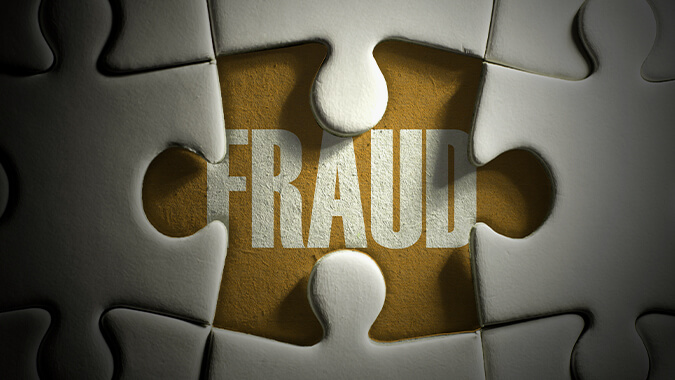
Lost Profits and Damage Calculations Explained
- Published
- Mar 19, 2019
- By
- Hubert Klein
- Share
Unfortunately, when it comes to business, disagreements happen that become polarizing enough that the parties concerned wish to abandon their business relationships. Contracts can outline each party’s responsibilities and recourse if there is such a breakdown; however, there are times when even an enforceable agreement is ignored. This can result in lost time, business opportunities and profits – and this is when it becomes time to hire a qualified professional to help assess and quantify any monetary damages.
The most common form of damages is lost profits, which is generally caused by a breach of the parties’ agreements. Professional help notwithstanding, it is still important for business owners to understand the basics of lost profit calculations under commercial litigation.
What Is the “But-For World?”
Many attorneys and damage experts use the term “but-for world” when it comes to lost profit damages. Even non-attorneys should understand what this means because it is the crux of any lost profit damages analysis. The basic theory is what would have happened “but-for” the incident, breach or disagreement leading to litigation.
Within the “but-for world,” experts can use a couple of approaches to calculate damages: (1) the before- and-after method and (2) the yardstick, or benchmark, method. The expert’s choice depends on the facts and circumstances of each case. A lost profits damages expert considers many factors such as seasonality, customer trends, economic factors, and industry factors.
The before-and-after method evaluates the performance of the business before and after the damages-causing incident. The business would have enjoyed a similar level of profits but for the incident. Management can provide projections and historical financial data to extrapolate revenue growth. However, these projections must be reviewed for reasonableness.
The yardstick, or benchmark, method, is best used when historical data is not available. This methodology applies revenue trends and the results of a similar business to the one suffering damages. Comparative businesses could be competitors, other locations of business that have not suffered damages, or general industry averages.
Determining the Lost Profits
Regardless of which method the expert employs, he/she needs to consider the achievability of the projections and the historical financials, especially when those projections diverge from historical performance. Determining the lost profit/damages timeline can be tricky. The expert must consider the damage recovery time. In other instances, a contract may dictate the amount of time for which lost profits/damages can be projected. These documents let the expert determine a basic damage amount. However, there are other factors to calculate.
A damaged party has an often-overlooked duty to mitigate the losses sustained due to the damage caused. Even when the damaged party has not mitigated the damages, the potential mitigation must be considered in determining damages. So, although the damaged party had no offsetting profits, the damages they sustained can be reduced by potential profits they could have had during the damage period. One cannot sit idle and seek a windfall; it is imperative that a damaged party make every attempt to mitigate damages in order to show the court a good faith effort to do so.
Another potentially disregarded area when calculating damages is saved expenses. The cost of overhead is often ignored when calculating damages. If the damages are significant and affect the overall overhead costs of the company, then you must consider saved overhead costs. Some other direct saved expenses include materials, utilities and payroll.
The damaged party may incur extra expenses to get the business up and running and to potentially mitigate the damages. In such cases, the amount of money necessary to return the business to its prior-damage position (“but for”) should be added to the damages sustained. The damaged party clearly segregates these extra expenses from the normal course of business expenses. This can be done by creating a new account within the accounting system or by merely keeping track of these expenses in a spreadsheet. Proper documentation of extra expenses is key to being reimbursed in litigation.
After the Base Calculation – Discounting the Lost Profits/Damages
You might think that the lost profits/damages (which would include a reduction for any mitigation and saved costs) is the amount due to the damaged party. Wrong. There is still the risk that the level of profits forecasted might not be achieved. Therefore, the next step is to discount lost profit damages to present value—discounting the base calculation of lost profits/damages necessary. Why? A dollar today is more valuable than a dollar a year from now, as present dollars can be invested to yield more than a dollar a year from now (time-value of money) and the uncertainty that you may never get that dollar in the future.
You can determine the discount factor to arrive at the final damages amount by using:
- A risk-free rate, such as the 20-year U.S. Treasury bill rate (when the losses are a certainty).
- Your company’s weighted average cost of capital.
- Your company’s cost of debt.
- Your company’s cost of equity.
- A build-up method.
- A combination of all the above.
A damages expert will consider a variety of risk factors and may adjust the base discount rate based on:
- Market risk, including barriers to entry, competition and buyer preferences.
- Financial risk, particularly illiquidity and any other contractual obligations.
- Systematic risk, including the company size premium.
- Company-specific risk to account company-specific limiting factors.
- The general riskiness of achieving the forecasted lost profits/damages.
The discount rate calculated by the damages expert impacts the final quantification of lost profit damages. The higher the discount rate, the less lost profits/damages there are to recover. It is also possible that the model created by a damages expert will have multiple discount rates, depending on the number of years covered by the damages, as the risk might increase the longer the time horizon.
Apply the discount rate or rates to determine the present value of the forecasted lost profits/damages. This discounted amount of loss profits is then added to the additional expenses incurred, resulting in your total lost profits damages.
Determining lost profits in damages isn’t easy. There are often many factors to consider and evaluate. Such is why a qualified damages expert is often needed to help both the lawyers and the parties arrive at an accurate determination of lost profit damage.
What's on Your Mind?
Start a conversation with Hubert
Receive the latest business insights, analysis, and perspectives from EisnerAmper professionals.











